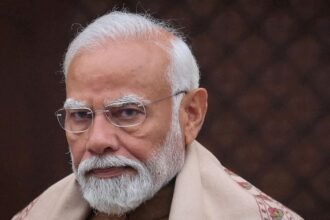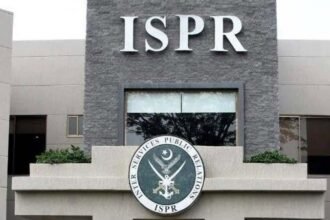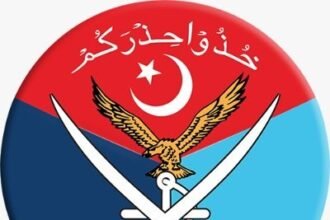(Maria Mansab)
Pakistan stands on the threshold of a mineral revolution, with its untapped reserves of copper, gold, coal, and rare earth elements offering an unprecedented opportunity to transform its economy. A recent federal cabinet briefing estimated the country’s mineral wealth at approximately $8 trillion, a significant increase from the previous assessment of $6 trillion. According to the Trade Development Authority of Pakistan (TDAP), this sector contributes economy with above 5,000 operational mines, 50,000 SMEs, and direct employment of 300,000 workers. Despite this immense potential, the mining sector currently contributes only 3.2% to the national GDP, with mineral exports making up just 0.1% of global trade. In contrast, resource-driven economies like Chile and Australia drive over 8% of their GDP from mining.
Spanning approximately 600,000 square kilometers, Pakistan’s mineral-rich landscape boasts 92 identified minerals, of which 52 are commercially extracted. The country produces 68.52 million metric tons of minerals annually, according to The Trade Development Authority of Pakistan. As per the OGDCL feasibility study of the Reko Diq project, there are $60 billion worth of copper and gold reserves at the Reko Diq project in Balochistan. The Reko Diq project is expected to yield a production of 13.1 million tons of copper and 17.9 million ounces of gold over the life of the mine.
As per the Pakistan Geological Survey, Khyber Pakhtunkhwa is known for its high-quality emeralds from Sawat, along with 3 billion tons of granite and extensive, yet-to-be fully explored copper reserves. In Gilgit-Baltistan and Azad Kashmir, promising opportunities for the extraction of precious stones, rock gold, antimony, and molybdenum. Sindh Mines and Mineral Development Department’s official data highlights that Sindh is home to 26 billion tons of granite, 60 million tons of Silica Sand, 350 million tons of Marble, and eight million tons of Gypsum. Additionally, the Punjab Mineral Development Corporation highlights Punjab as home to the world’s second-largest Khewra salt mine, along with approximately 250 million tons of iron ore and 511 million tons of coal.
One of the most groundbreaking discoveries in recent years has been Pakistan’s rare earth mineral reserves, which are crucial for high-tech industries, including semiconductor and renewable energy. The United States Geological Survey estimated that Pakistan holds approximately 50 trillion worth of these minerals, positioning the country as one of the most resource-rich in this domain. Given that the global rare earth market is valued at 10 billion and a modest 2-5% market share could inject $1–2 billion annually into Pakistan’s economy over the next 5 to 7 years. By integrating into the global supply chain, Pakistan has the potential to reduce its reliance on imported raw materials while attracting substantial foreign investment.
To capitalize on these vast resources, the government has introduced key initiatives to create a structured and investor-friendly mining sector. The Pakistan Mineral Investment Forum 2025, scheduled for April 8-9, will bring together leading international mining corporations. The event is expected to facilitate agreements and partnerships that could unlock billions in foreign investment.
The Foreign Investment Promotion and Protection Act 2022 has played a pivotal role in providing tax exemptions, duty-free machinery imports, and relaxed ownership policies, thereby making Pakistan an attractive destination for global investors. A crucial step in this transformation is the National Mineral Harmonization Framework 2025, which aims to streamline mining regulation across provinces, ensuring a transparent and coordinated approach to ensure management.
Infrastructure development is another vital aspect of Pakistan’s mineral sector expansion. Plans are in place to establish a rail network connecting Gwadar and Chagai, facilitating efficient mineral transportation to export markets. The government has also approved the Siah Dik copper mining project in Balochistan, awarding it to China Metallurgical Group Corporation (CMGC), which is already managing the Saindak gold and copper project. Pakistan has identified 5 potential mineral projects for offering to the UAE for investment and development in Chagai, Waziristan, and Gwadar, reinforcing Pakistan’s position as a strategic mining hub.
A breakthrough in international collaboration is the agreement between US Firm White Bridge Mining and Apex Energy for placer gold exploration, which underscores growing global confidence in Pakistan’s mining potential. Beyond economic growth, the mining sector is also set to play a crucial role in employment generation and skill development. Currently, 77% of the workforce in Reko Diq consists of local Baloch workers who are receiving international-standard training, equipping them with the expertise needed to participate in the global mining industry. The government is also prioritizing sustainable mining practices, introducing environmentally friendly policies, and establishing the National data center to enhance transparency in resource management.
With the support of the Special Facilitation Investment Council (SFIC), Pakistan is streamlining the investment process to provide all necessary facilities on a single platform. The country’s strategic location with access to key logistic gateways like the Gawadar and Karachi ports makes it an attractive destination for mineral investments, especially in Asia, the Middle East, and Central Asia. Pakistan’s 91% cellular coverage and modern banking sector further facilitate mining operations.
As Pakistan moves forward, the Pakistan Mineral Investment Forum 2025 is expected to be a pivotal movement in this journey, fostering new partnerships and paving the way for long-term economic stability and industrial advancement. By leveraging its vast reserves and aligning with global market demands, Pakistan has a unique opportunity to establish itself as a powerhouse in the global mining industry and ensure a prosperous, resource-driven future.










